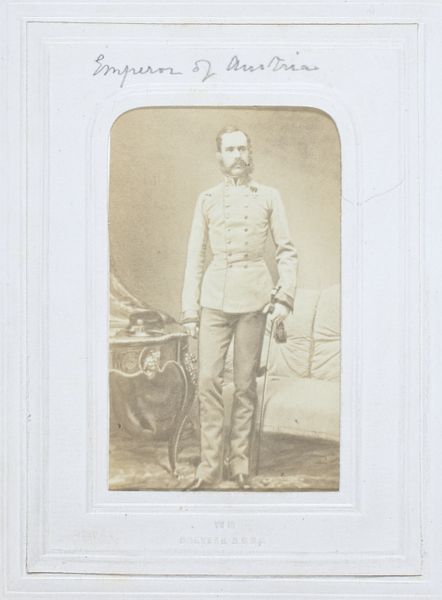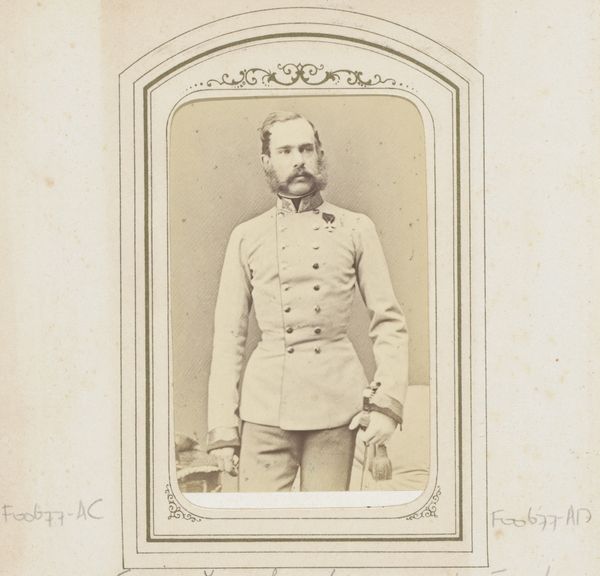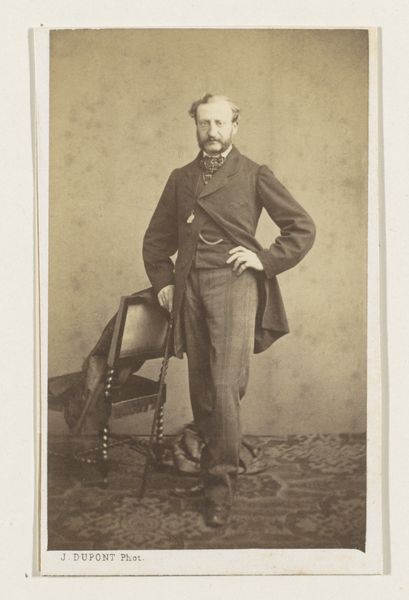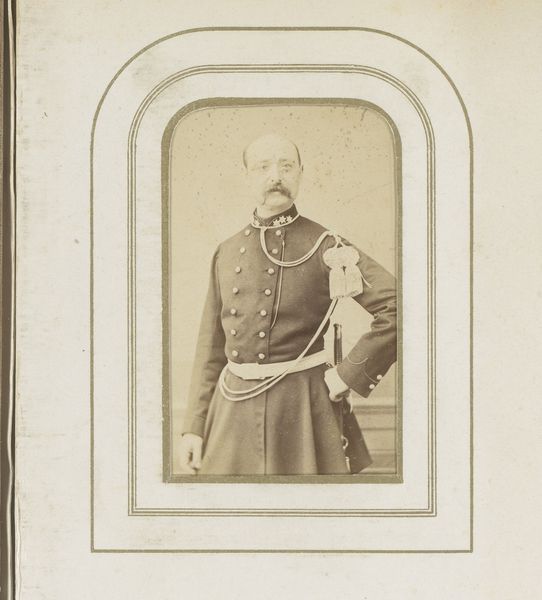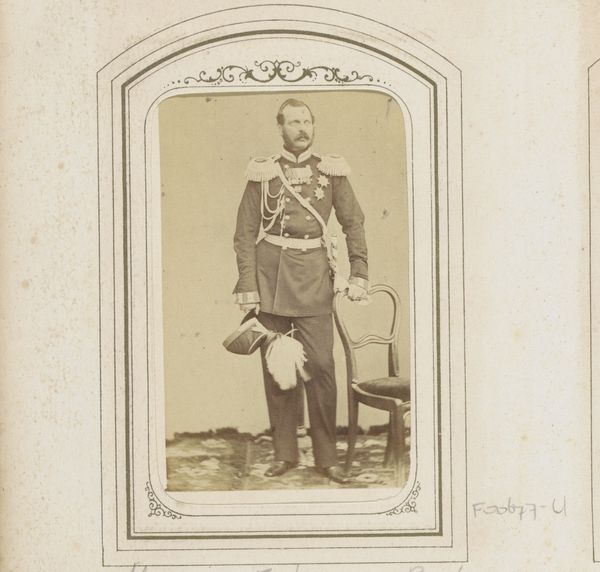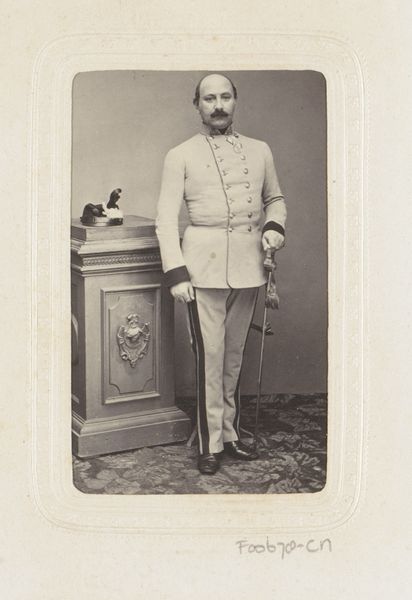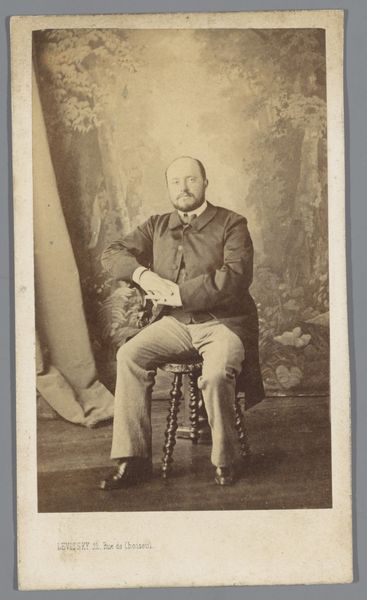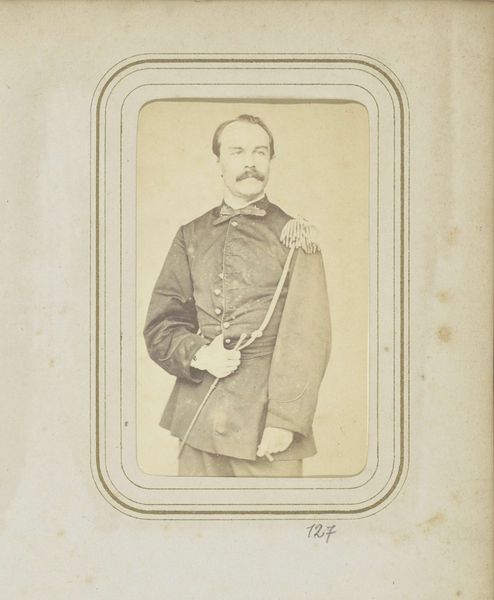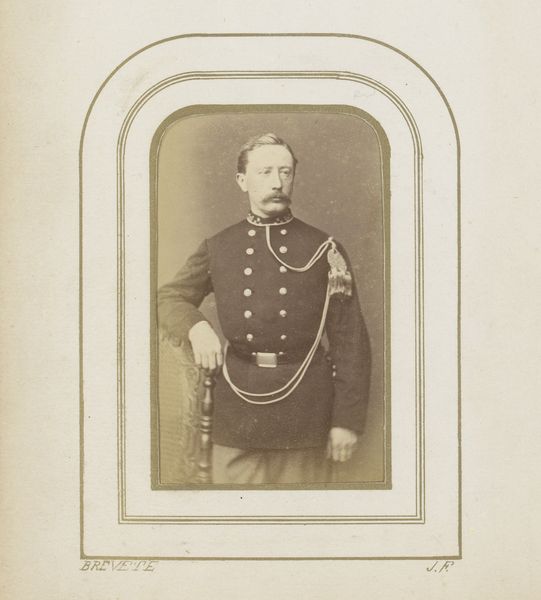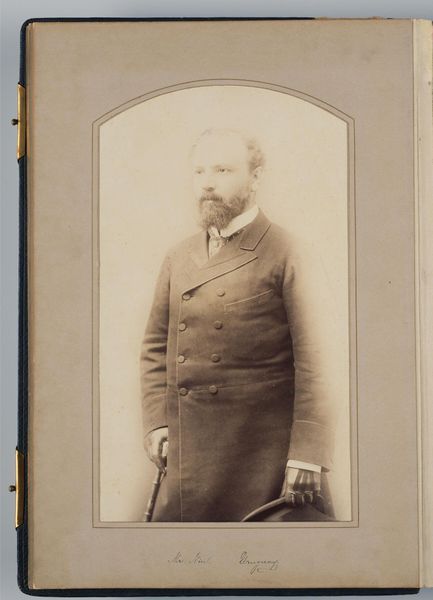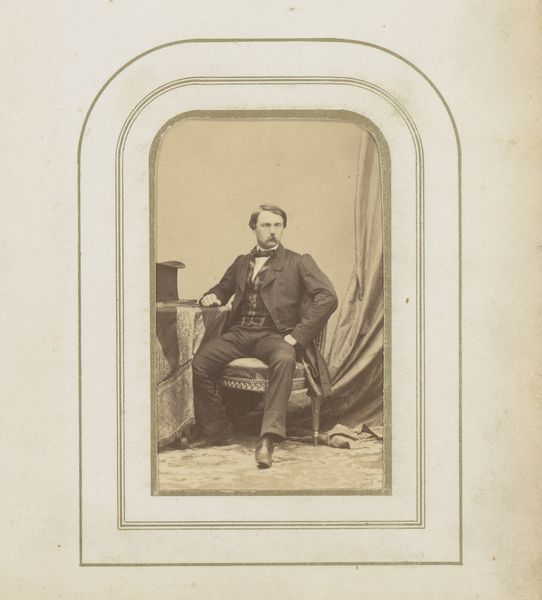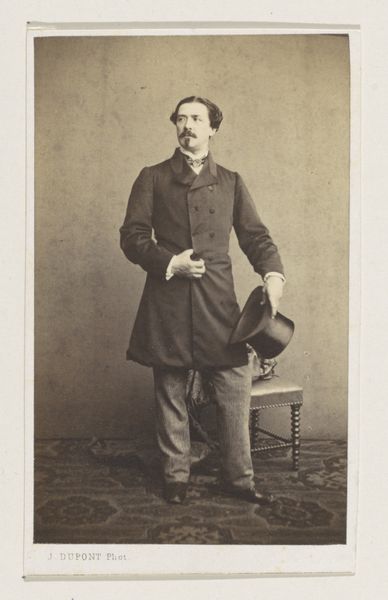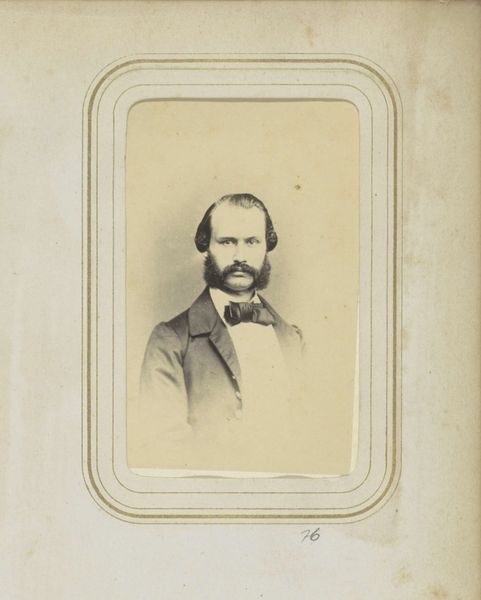
photography, albumen-print
#
portrait
#
photography
#
albumen-print
Dimensions: height 90 mm, width 57 mm, height 104 mm, width 61 mm
Copyright: Rijks Museum: Open Domain
This portrait of Franz Joseph I, Emperor of Austria, was made by Ludwig Angerer using the photographic processes of the time. Photography in this era was a complex craft, with practitioners carefully preparing glass plates with light-sensitive emulsions. The material of photography, with its capacity to capture a likeness, rapidly changed how people saw themselves and others. In this portrait, we see Franz Joseph in a carefully staged setting, surrounded by symbols of his power and wealth. The photograph itself, however, represents a different kind of power – the burgeoning power of industry and technology to represent and disseminate images. Consider the amount of work involved in producing this image: the photographer’s technical skill, the sitter’s time and status, and the resources required to create and distribute the final product. The photograph democratized portraiture, making images accessible to a wider audience, but it also reinforced social hierarchies by capturing and celebrating the elite. It’s a powerful reminder that even seemingly simple images are the result of complex social and economic forces.
Comments
No comments
Be the first to comment and join the conversation on the ultimate creative platform.
